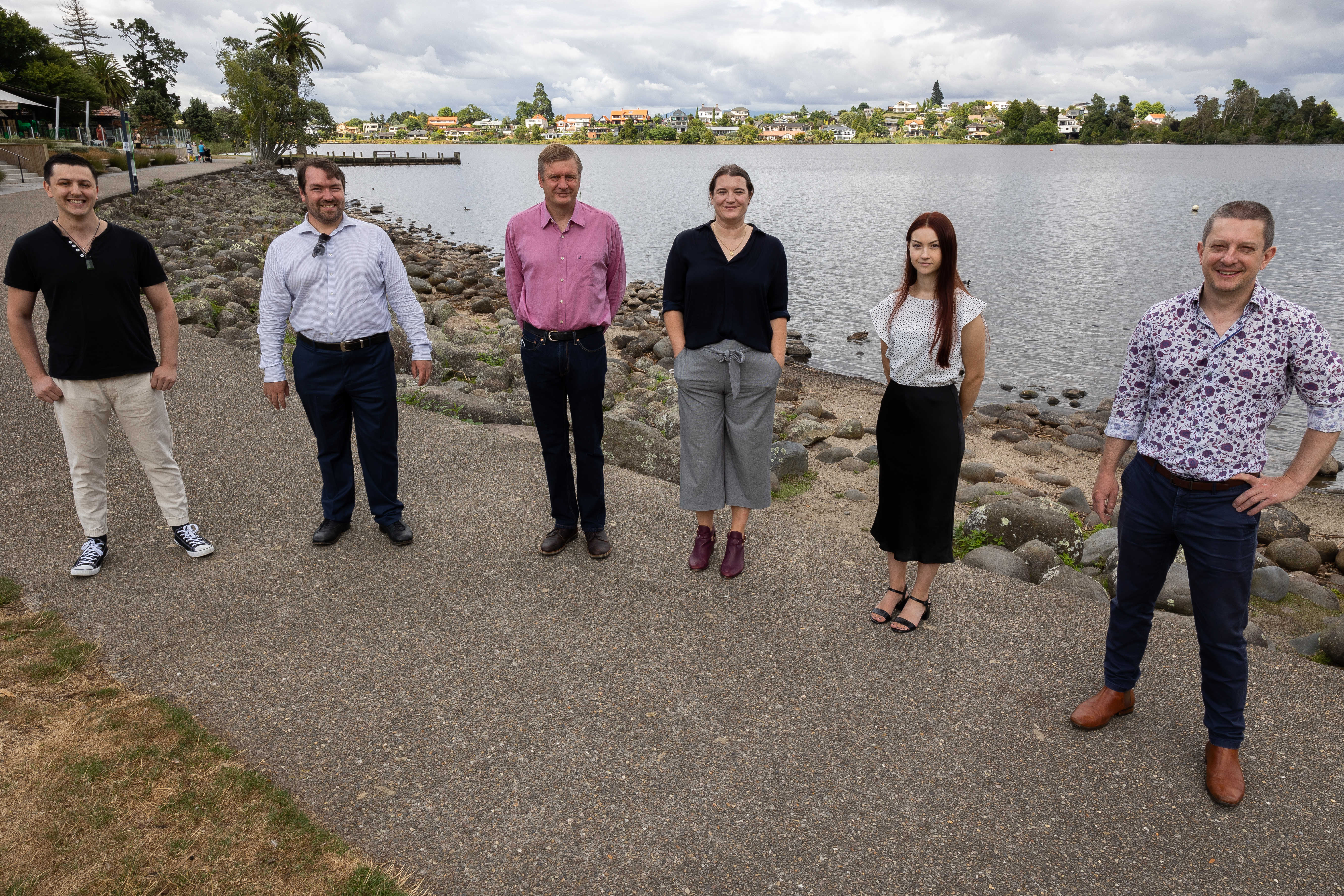Research
Published 26 April 2022A womb with a view: How and why does the human fetus see?

The team of the researchers (from left to right Zac Isaac, Vincent Reid, Jacob Heerikhuisen, Jess Leov, Maddy Cosgrave, Martin Necas) photo: provided
How does a fetus engage with the visual world? We know that the whare tangata womb is not a dark environment and light in the uterus is essential for the formation of the eye. What we don’t know is the specific response of the fetus to different light levels. So how does the human visual system develop? This currently unanswered question is one that Professor Vincent Reid, Dr Jacob Heerikhuisen and PhD student Zac Isaac at Te Whare Wānanga o Waikato University of Waikato are aiming to address.
With the help of a Marsden Fund Standard Grant, the team is studying this interesting biological phenomenon by modelling how light enters the uterus throughout pregnancy. In previous studies, they have shown that the fetus prefers to look toward face-like images, explaining that different light levels arriving in the uterus from different directions may be the reason why. The team is currently creating models to understand how light and maternal tissue interact. These will provide a pathway for showing patterns of light to the fetus which will allow them to assess psychological development.
Collaborating with Martin Necas from Waikato District Health Board, Dr Kirsty Dunn from Lancaster University (UK) and Professor Tim Donovan from University of Cumbria (UK), they will then investigate what the fetus sees in the womb and how the fetus responds to light.
Over three separate studies the group will use 2D ultrasound to record eye movements of the fetus in response to light stimuli, by shining light in different patterns on the belly of a pregnant person. In their first study, they will explore fetal responses to light presented in the periphery (side of the face) when compared with central, front of the face locations. This will indicate which area of the face the fetus prefers to engage with and which parts of the eye are more developed before birth. In babies, presenting an image in the periphery will typically produce a response when a central image will not, so the researchers anticipate that this will be replicated.
In the second study the team will investigate a type of eye movement known as anticipatory gaze. This is when an individual looks toward a location in space before visual stimuli are presented. This eye movement appears basic, but represents a relatively advanced set of learning and cognitive skills including memory and attention.
In a third study that is related to the Marsden funded work, they will explore fetal responses to motion. The researchers will examine the fetal response to patterns that match adult ideas of goal-directed movement. This experiment represents an exploration of fetal visual attention that provides the earliest basis of developing complex social understanding.
Together these studies aim to shed light on how the fetus engages with the visual world, furthering our understanding of the development of human vision and perception. They will also tell us what visual information a fetus detects, and why. The outcomes of this research will have important implications for developmental science with downstream applications for obstetrics and neonatal care, ensuring that our pēpi babies continue to be born with not just eyesight, but social understanding and vision for the future.
RESEARCHER
Professor Vincent Reid
ORGANISATION
University of Waikato
FUNDING SUPPORT
Marsden
CONTRACT OR PROJECT ID
UOW2005
